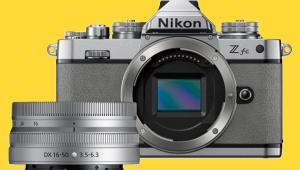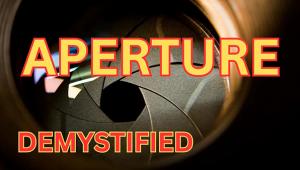Olympus PEN E-PL8 Mirrorless Camera Review

(Editor's Note: Lab Review lab tests and comments are supplied by BetterNet, Shutterbug’s TIPA-affiliated testing lab and edited by George Schaub. Shutterbug is the sole US representative within TIPA, a worldwide association of photo and imaging magazines.)
The new Olympus E-PL8 is the latest model of the PEN series. PEN cameras are stylish and compact systems based on Micro Four/Thirds sensors and lens mounts. The camera is available in different colors, as are the numerous accessories that can be matched to the initial color choice.
The camera looks like an analog rangefinder camera, but the Olympus E-PL8 doesn’t come with a viewfinder. The photographer has to use the 3-inch LCD on the back, which also serves as the visual control center for menus and image parameters.
Olympus does offers an EVF system that can be mounted on the hot shoe of the E-PL8. The camera offers a special interface (right below the accessory shoe) that can be used for several purposes, including a microphone adapter used to connect an external microphone with a 3.5 mm jack.




The LCD screen of the camera can be flipped upwards by about 45 degrees to use the monitor like a waist-level finder or downwards by 180 degrees, a “selfie” position. This solution is a little unusual (most cameras with selfie functions will swivel the monitor to the top) and a little unhandy when using the camera on a tripod or even on a a “selfie stick.” The monitor is touch sensitive and can be used to set up menu parameters or choose an AF area.
Based on a magnesium alloy body, the camera feels quite robust. The camera’s mode dial on the top offers standard exposure modes (iAUTO, P, S, A, M) and preset Scene modes. In addition, it offers special effects ART modes, most of which allow some modification. A setup dial on top allows for changes to image parameters such as shutter speed. This dial encircles the shutter release button and can also be used for menu navigation. The E-PL8 offers a 4 way control field on the back to change menu items and allows direct access to 4 functions: EV compensation (by +/- 5 EV stops); focus area settings (out of 81 areas which nearly cover the whole image); flash mode; and the drive setting (single shot, burst mode, self timer).
The camera offers a Wi-Fi module that can be used for remote control (including live preview on a smart device) and for image data transfer to the mobile device. When using the “Olympus Image Share” app in remote control mode it allows the user to change exposure parameters (including ISO speed settings)

Comments on Image Quality:
Color: Most Olympus cameras tend to yield lower color saturation images and the E-PL8 is no exception. The GretagMacbeth chart was reproduced with a saturation of 93,3 percent, which is quite low. Nevertheless, real life images have a natural look. The portrait shot and the test box shot show natural colors with a nice and look. The white balance system of the camera did a really good job. It shows a tendency into cooler colors and only the brightest neutral tones of the chart are shifted into the direction of the green and yellow area. In contrast to most other cameras, the blue nuances don’t show high saturation or shifts towards a magenta/purple direction; if anything they are shifted into the turquoise area of the color space. Skintones are reproduced very naturally.

Sharpness: The camera showed very good results in our sharpness tests. The ISO12233 chart was reproduced with 3,242 of 3,456 lines per picture height, which is a very high result. The camera does use intense sharpness filtering to enhance sharpness. The overshot effect isn’t very high (13.4 percent), but the contrast line of the test chart is quite exaggerated. In real life images these effects are noticeable, but more discreet. The fine structures of some elements in the standard test box shot and the portrait shot look more natural, but are still very crisp. The very good color differentiation enhances the impression of sharpness as well.
Noise: The Olympus E-PL8 performed excellently in our noise tests. Even though the camera uses a small MFT sensor, the luminance noise level, especially in standard ISO settings, is very low. It keeps this low level beneath 1.0 percent up to ISO 6400. At higher ISO speed settings the anti-noise filtering effects become visible; images become a little blurred/smoothed and fine details get lost. At ISO 25,600 mode color saturation drops drastically. The dynamic range results are very good. The camera achieved a maximum of 11.6 f-stops and keeps a high level of 10-11 f-stops between ISO 200 and ISO 3200. In images taken with higher ISO speeds the dynamic range drops drastically.

Video Format and Handling:
The new Olympus is able to record Full HD video with 1920 x 1080 pixel at 30 frames per second. It doesn’t offer 4K capabilities or higher frame rates. Full HD videos are recorded in MOV file format and use standard H.264 compression. The camera offers additional movie modes with reduced resolution (720p) and can record these clips with MJPEG compression.
The camera has an additional record button on the back. The settings on the exposure mode dial on the top have no effect on video recording. When pressing the video record button while the camera is set to P, S, A or M photo mode it will automatically switch into autoexposure mode for video recording. However, the camera offers a special video mode on its mode dial. In this mode the image size on the LCD screen is set to 16:9 aspect ratio and the camera offers P, S, A and M mode for video recording. When using the M mode the photographer can also set up the ISO speed. ISO speed in video mode is limited to a maximum of ISO 3200. Audio recording level can be set manually, but it doesn’t offer an integral microphone jack. The jack can be set up with an optional adapter system that sits right below its accessory shoe.

Comments on Video Quality:
The Olympus E-PL8 showed very good results in our video color and video dynamic range tests. The automatic white balance system worked very well and the camera reproduced the test chart with neutral colors; we noted only a very minor shift into a cooler image reproduction. The dynamic range results are very good, but the camera seems to create videos with very hard/intense contrast reproduction. This is noticeable in our sample test chart.
The resolution results of the E-PL8 videos are disappointing. The test chart was reproduced with 669 of 1080 lines per picture height. Nevertheless, contrast lines are exaggerated and show some halo lines on the border of black and white elements. This effect is noticeable in our sample test shots as well. Videos have a soft look, but hard contrast lines are overdone and cause a little “artificial”, unnatural look.
The noise results in video mode are very good. The camera creates video images with only minor luminance noise and nearly invisible color noise in the ISO 200 to ISO 1600 range. At ISO 3200 color noise becomes visible.
Pro:
+ Very compact and stylish camera
+ Swivel LCD
+ Wi-Fi system for remote control and data transfer
Con:
+ Missing viewfinder (EVF is offered as an option)
The Olympus PEN E-PL8 sells for $549 (body only) in a choice of white, black, or brown. It also sells in a kit with the M.Zuiko 14-24mm f/3.5-5.6 IIR lens for $650.
(Lab Review is where we publish web-exclusive lab reports on cameras. To read more Lab Reviews, click on the Reviews tab on the top navigation bar of this page. New photo gear reports are published frequently, so check Reviews for more equipment evaluations from Shutterbug writers.)
- Log in or register to post comments

















































